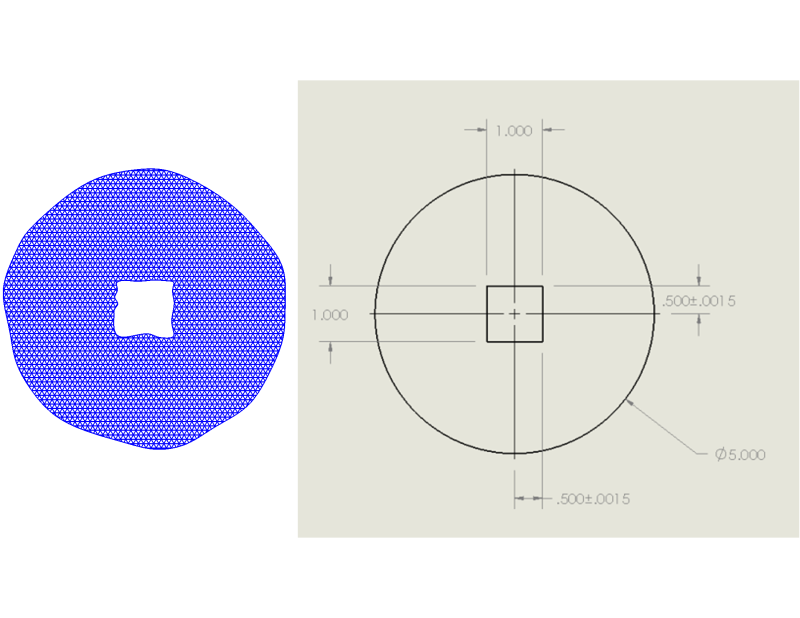I have a disk that is inserted in a cylinder. A square sleeve will be inserted and welded to the square bore of the disk and I am trying to center the hole on the disk. Is a position tolerance the best way to do this? I have read that you can use position with any feature, not just a circle. Even though it is a square, the diameter callout still seems correct to me as the tolerance zone.
Otherwise, setting an X-Y tolerance on the distance to the centerline would give a similar result. I guess the only difference there is the square vs circular tolerance zone.
Is this correct? Thank you.
Otherwise, setting an X-Y tolerance on the distance to the centerline would give a similar result. I guess the only difference there is the square vs circular tolerance zone.
Is this correct? Thank you.

